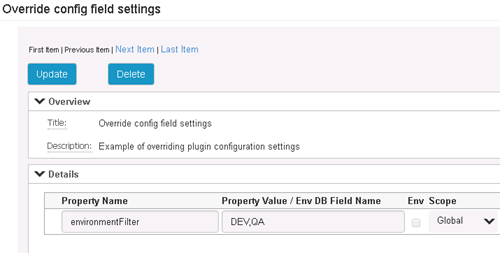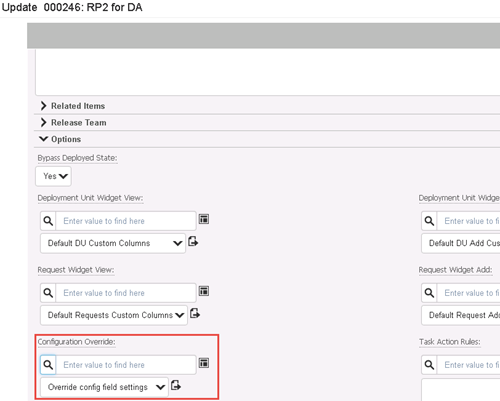Using entries in the RLC Configuration Overrides table, you can pre-define sets of field values for specific purposes, such as for a project, an application, or a release.
Auxiliary table level configuration overrides are used to:
- Limit value selections when adding objects in collections, such as requests, deployment units, and deployment tasks.
- Define sets of overrides for all configurations (global) or limited by a configuration UUID or tag.
- Define environment-specific overrides to enable matching Release Control environments to provider environments.
To override configuration settings:
- Select the fields for which overriding is allowed. See
Making Fields Eligible for Override.

- Add entries to the
Configuration Overrides table. See
Adding Configuration Overrides.
You can use dynamic values in the Configuration Overrides table to access the exact values for fields set within an item, such as a release package or deployable release train. To dynamically override the field value, the field must be used on a form.
The following figure shows property value overrides for Environment Filter. For information on using environment-specific overrides, see Configuring Environment-Specific Field Overrides.

- Apply the configuration override entry in release items. See
Applying Configuration Overrides.

For more details, see the following: